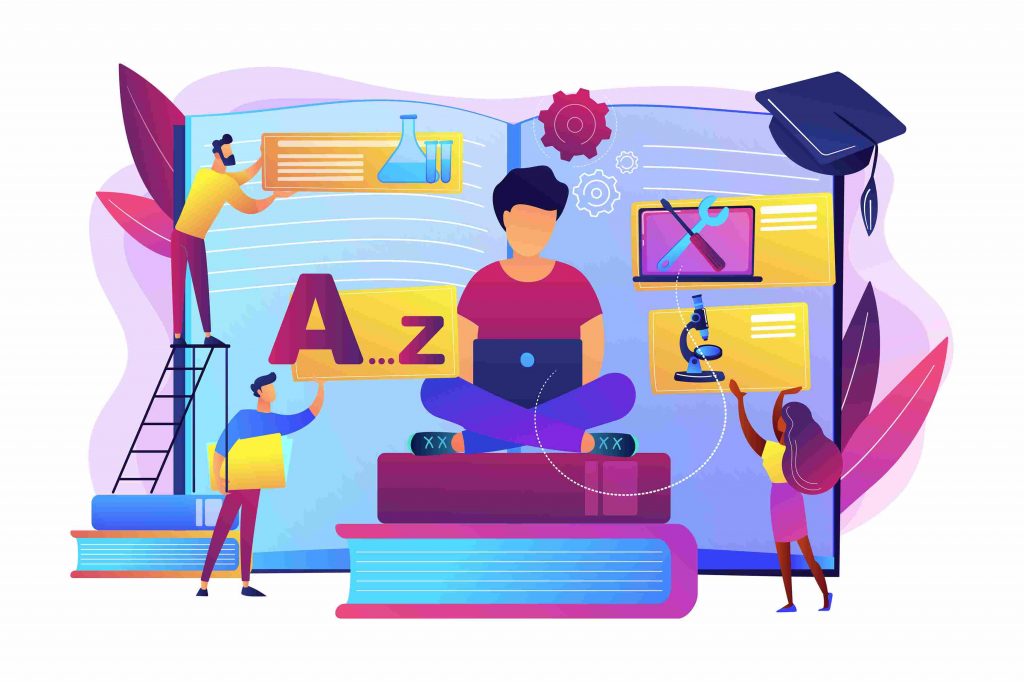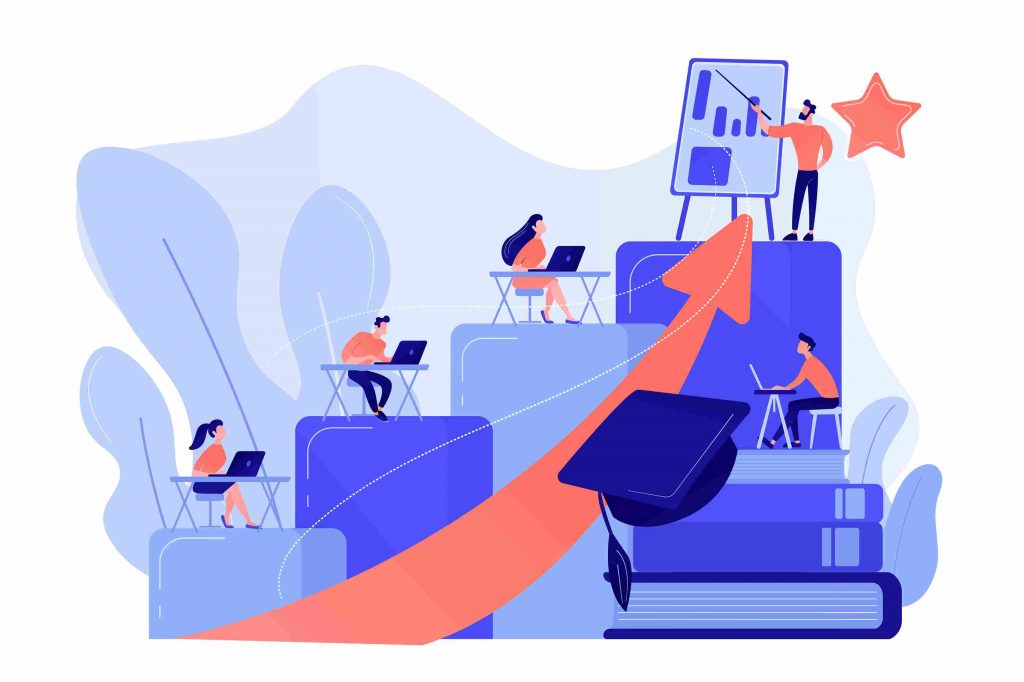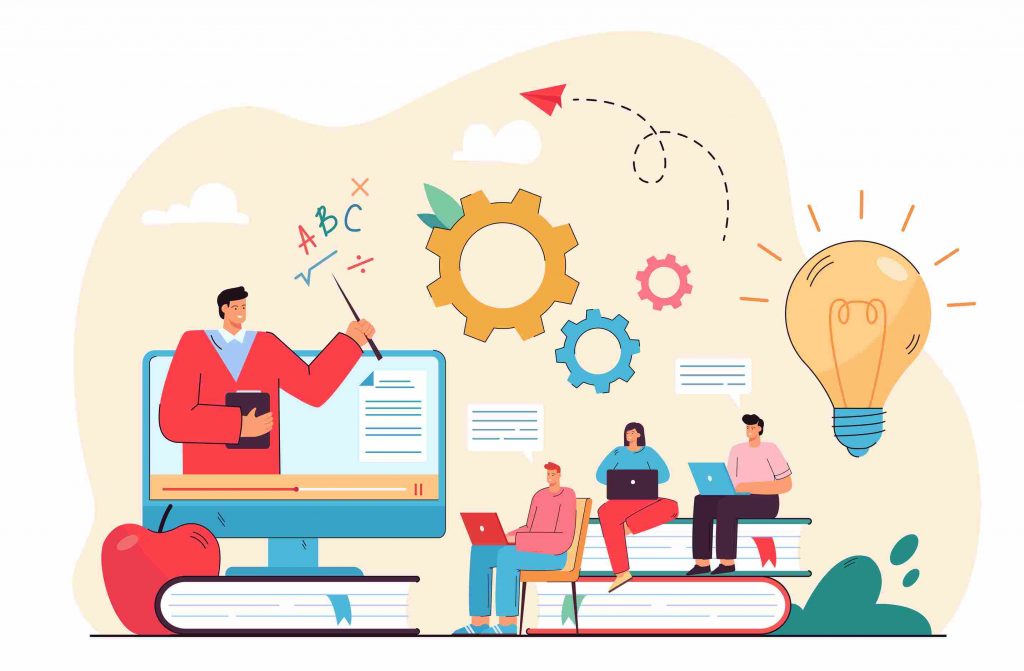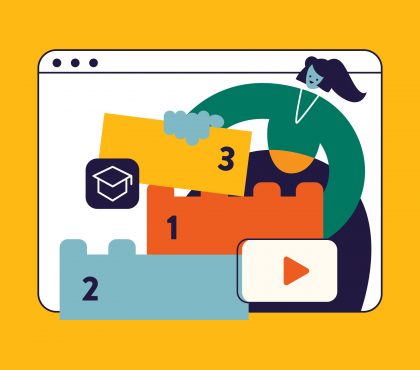In recent years, the growth of technological developments has necessitated the need to close the skill gap between using automation processes and using traditional methods. This fact motivates learning and development roles to come in all sizes and forms. In this article, we’ll go through 4 main learning and development roles and responsibilities.
What is L&D
L&D stands for Learning and Development, a function within an organization that focuses on enhancing the skills, knowledge, and competencies of employees. L&D aims to support employees’ personal growth and align their development with the company’s goals. This typically involves training programs, workshops, mentoring, e-learning, and career development initiatives, all designed to improve performance, foster innovation, and promote career advancement.
L & D Responsibilities in the HR Department
#1: Stimulate employees to develop their capabilities
#2: Motivate and engage employees in training programs
#3: Assist to build the organization brand
#4: Help to create a values-based culture
Preparation Checklist to Power your Digital Transformation
Wondering if you miss anything in your preparation to digitize your training? This is just what you need.
#1: Stimulate employees to develop their capabilities
This is the most conventional L & D role and responsibility – assisting people in acquiring the skills required for their work through training programs and even preparing them for promotion later on.
#2: Motivate and engage employees in training programs
The second learning and development role is motivating and engaging employees in training programs. Motivating employees can be enhanced by boosting engagement in training programs as it results in better productivity and less absence. When engagement surveys become more usual, the capacity to keep employees motivated and measure their prospects also becomes more vital.
What may help with employee motivation and engagement can have nothing to do with direct job performance. In the case of L&D practitioners, motivating employees with highly produced videos can feel more like “edutainment” than true talent development. But, it’s essential to bear in mind that engagement still has an ROI in and of itself, independent of skills performance.

#3: Assist in building the organization’s brand
The third learning and development role in assisting organizations to build their brands in the eyes of employees. If you haven’t known it yet, employee experience is regarded as the holy grail of HR departments.
When more than 40% of workers are considering leaving their jobs, but 94% of employees say they would stay longer with their employers if they invested in their employees’ development, It’s clear to see the tie among excellent talent development programs, the quality of an employer brand, and the financial investment employers have for building upskilling programs.
#4: Help to create a values-based culture
The fourth learning and development role is to assist in creating a values-based culture. Often, the L&D department has the most significant volume of interactions with employees compared to any other human resources department.
Therefore, this puts L&D in a unique position to define and reinforce an organization’s culture. They need to take key parts of the values of a company and incorporate them into L&D programs, such as onboarding programs, training programs, etc. This enables employees to quickly immerse themselves into the values of a business.
Whether or not these values are written out and hung on the office walls or internalized in the minds of employees. Therefore, no team is in a better place to influence the corporate culture than the L&D team.
If you want to take a deeper look at L&D benefits and processes, just check out the video from IU Southeast Instructor: Alysa Lambert. In this video, you’ll be walked through the processes involved in employee training and development.
Characteristics of Learning and Development Team Roles
Regardless of the exact role, learning and development jobs all have certain characteristics in common. We can take a look at the definition of learning & development roles to distinguish several of these characteristics.
Learning and development is the process of enhancing an employee’s skills and knowledge so that they will achieve better performance at work. While “Learning” focuses on the acquisition of knowledge, skills, and attitudes, “Development” is more about broadening and deepening knowledge in line with development goals.
Find more about how we customize Learning and development tasks with animation:
4 Main Learning and Development Roles to Explore
#1: L&D specialist
#2: L&D manager
#3: Director of L&D
#4: L&D consultant
#1: L&D specialist
The L&D specialist (also known as the training and development specialist) often has an operational role. Their main L & D roles and responsibilities are designing, conducting, and organizing training programs. These programs aid in the improvement of employee performance and ensure organizational productivity.
An L&D specialist excels at identifying the current and future skills requirements of an organization. Their aim is to create flexible learning interventions (through digital or any other means) to meet the diverse needs of the workforce.
Here are some of the learning and development roles and responsibilities you can expect to be involved in as an L&D specialist:
- Carrying out capability assessments across the organization
- Designing learning solutions to ensure employees get the best out of their development
- Using digital tools to create flexible and innovative learning programs
- Facilitating a range of learning interventions, including technical, behavioral and leadership programmes
- Driving a culture of continuous professional development (CPD)
- Creating a coaching culture in the organization
- Monitoring how effectively learning has been transferred to employees.
In terms of salary, the average L&D specialist salary lies around $ 60,000 in the US, according to PayScale. In the UK, compensation for L&D specialists tends to be lower. According to PayScale, the average learning and development specialist’s salary is often below 30,000 GBP, which equals $41,000.

#2: L&D manager
The L&D manager plays a critical role in an organization’s daily learning and development activities. Her learning and development roles and responsibilities include:
- Coordinate all L&D activities
- Partner with business managers, other members of the L&D department, and human resources department.,
- Track budgets and negotiate contracts with third-party training providers.
- Report to the director of L&D– or the head of HR – and act as the go-to person within the organization for anyone who has questions about L&D programs of the company.
Key skills requirements include:
- A strong ability to collaborate and communicate
- Budgeting skills and an understanding of corporate finance
- Being able to analyze and handle problems
- Management skills.
In terms of salary, an L&D manager’s salary will depend on their duties, level of seniority, company size, and location. In the US, an entry-level L&D manager can expect to earn around $62,000 while someone mid-career will earn around $73,000, according to GetSmarter.
In the UK, and also according to GetSmarter, the average salary of an entry-level L&D manager is around 36,000 GBP and he can expect to touch 40,000 GBP mid-career.

#3: Director of L&D
The director of L&D is a strategic role that analyzes the organizational needs for development. His learning and development roles and responsibilities include:
- Aligning L&D activities with organizational strategy
- The L&D strategy drafting
- Making sure the budget is enough to execute this strategy.
Furthermore, the director of learning and development is also a leadership role in the L&D department. He has to look after all of the department activities and identify the developmental needs of his organization.
This role also has a lot to do with data like conducting research or making further recommendations for management systems and databases.
On the other hand, this role also involves monitoring training records, developing dashboard reporting for all levels of the business, and identifying and defining the organization’s training needs.
Key skills requirement includes a strong ability to communicate, a strong base of analytical skills, leadership skills, and experience in developing L&D programs.
The salary of an L&D director will vary according to the company size and location. According to LinkedIn, the average salary for an L&D director in the US is $115,000. On the contrary, in the UK, the average salary of an L&D director is just below 120,000 GBP, according to Glassdoor.

#4: L&D consultant
A learning and development consultant does all of the above tasks in a consulting capacity. Depending on the consultant’s role and seniority, these activities can be operational or strategic.
A consultant’s learning and development roles and responsibilities are to assist with the learning and development programs of a company and the implementation of their learning initiatives. They can also play an instrumental role in the analysis of an organization’s training needs and the creation of its L&D strategy.

Key skills requirements include:
- Strong communication ability
- The ability to manage and maximize financial resources
- Being very knowledgeable in the education and training fields
- Being able to instruct and coordinate people.
In the US, as an L&D consultant, you can expect to earn an average of $64,000 a year, according to Indeed. However, this will depend on your duties, your company size, and the location.
In the UK, the average salary for an L&D consultant lies around 38,000 GBP, also according to Indeed.
Conclusion
There isn’t one right way to have learning and development jobs within your organization. Each company can have its own way of approaching L&D, depending on its situation. This blog aims to give you an idea of learning and development roles and responsibilities you might want to consider to help your business with its L&D efforts.
Read more

Sean Bui, the founder and creative director of F.Learning Studio, is a respected leader in the e-learning and multimedia production industry. With over 10 years of experience, he has dedicated his career to helping organizations create engaging and impactful learning experiences.
Under his leadership, F.Learning Studio has grown into a trusted partner for organizations in the education, healthcare, and corporate training sectors, producing over 2,000 minutes of educational animation.




